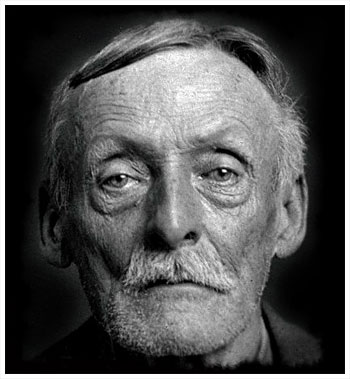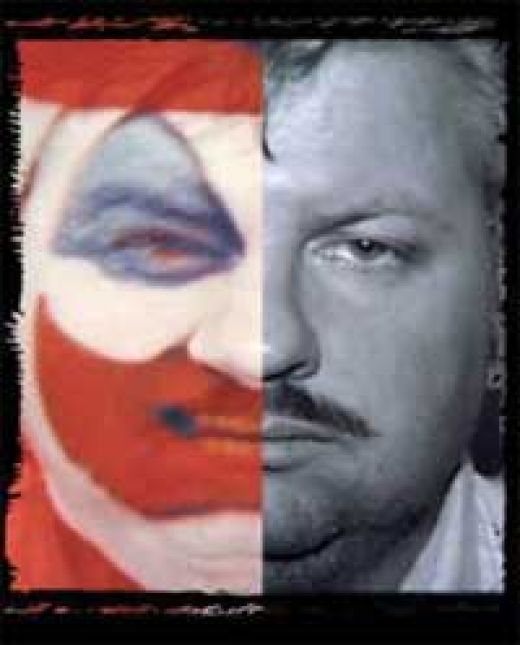The Mind of a Serial Killer
PSYCHOLOGICAL INFLUENCES
A personality disorder is always present in serial killers and is also found in twelve percent of the American population. Personality disorder is a general term that includes a variety of more specific disorders, and according to Plotnik (2005), it refers to inflexible, long term traits that significantly impair function of one's personal and social life.
One example of a personality disorder that is consistently found in serial killers and many other criminals is Antisocial Personality Disorder. This refers to a pattern of disregarding the rights of others without remorse or guilt. Three percent of the population and predominantly males have this disorder. Most mentioned by the media from minor delinquents to serial killers, this disorder contains two major characteristics: a constant disregard for others to the point of unlawful and sometimes violent acts, and their excellent skill of lying to and manipulating others. A child who is aggressive, antisocial, and almost impossible to control is at risk for developing antisocial personality disorder. (Plotnik, 2005)
Schizophrenia, a mental disorder involving delusions, hallucinations, disorganized behavior or speech, and decreased emotional expression, can sometimes occur in individuals who also have antisocial personality disorder. Hodgkins and Moran (2004) conducted an experiment involving the crimes of people with schizophrenia and antisocial personality disorder in comparison to those who only have schizophrenia. This combination of mental disorders showed much higher rates than just schizophrenics of the following traits:
- Substance abuse
- Below average performance in school
- Receiving physical abuse
- Father with a criminal record
- Crimes number committed before psychiatric evaluation
- Crimes committed in general
Though some serial killers have one or both of these disorders, either can be associated with violent crimes, though having both did not show a higher rate for homicide than having only schizophrenia. (Hodgkins and Moran, 2004)
According to Ressler (1990), an event occurs that triggers the cause of killing to occur as a form of release. This event, called a pre-crime stressor, often occurs without the person realizing the reason behind the stress and without the realization of the full extent of his or her motivations. For example, David Berkowitz denied having anything against women, and did not have a reason for killing them. Ressler believes that Berkowitz's mother's rejection was the pre-crime stressor that turned him violent, and while he did not attack her directly, most of his victims had a likeness to his mother.
Many people believe that a serial killer would be a hearing voices and seeing hallucinations, though most serial killers have not lost touch with reality (though some most certainly have). Instead, they suffer from chronic mental disorders with violent or abnormal social behaviors. Only a few, such as Richard Trenton who believed he needed to drink other people's blood to stay alive, fit the description. This group is an example of being disorganized in their crimes and they are usually apprehended quickly. (Barkan, 2006)
EXAMPLES OF SERIAL KILLERS AND PSYCHOLOGICAL INFLUENCES
 Noticed by FBI profiler Robert Ressler, he mentions Wuornos in his autobiography briefly because of this unique trait. Ressler is the one who coined the term "serial killer" and the term was used to describe murderers seeking personal gratification, not women killing in postpartum psychosis or for financial gain. Wuornos is the only female serial killer that matches this description. Of her killings, Wuornos speaks inconsistently, often changing major details. During her trial, psychiatrists testified that she was mentally unstable and had diagnosed her with borderline personality disorder. Three psychiatric interviews took place before Wuornos's execution, and she was deemed mentally fit for execution. During her prison stay, she complained that the prison workers were trying to get her to commit suicide before her execution, and believed they were messing with her food and other living conditions. She was thought to really believe these things were happening to her, though they were not, and was considered "delusional" by her attorney.
Noticed by FBI profiler Robert Ressler, he mentions Wuornos in his autobiography briefly because of this unique trait. Ressler is the one who coined the term "serial killer" and the term was used to describe murderers seeking personal gratification, not women killing in postpartum psychosis or for financial gain. Wuornos is the only female serial killer that matches this description. Of her killings, Wuornos speaks inconsistently, often changing major details. During her trial, psychiatrists testified that she was mentally unstable and had diagnosed her with borderline personality disorder. Three psychiatric interviews took place before Wuornos's execution, and she was deemed mentally fit for execution. During her prison stay, she complained that the prison workers were trying to get her to commit suicide before her execution, and believed they were messing with her food and other living conditions. She was thought to really believe these things were happening to her, though they were not, and was considered "delusional" by her attorney.
 Noticed by FBI profiler Robert Ressler, he mentions Wuornos in his autobiography briefly because of this unique trait. Ressler is the one who coined the term "serial killer" and the term was used to describe murderers seeking personal gratification, not women killing in postpartum psychosis or for financial gain. Wuornos is the only female serial killer that matches this description. Of her killings, Wuornos speaks inconsistently, often changing major details. During her trial, psychiatrists testified that she was mentally unstable and had diagnosed her with borderline personality disorder. Three psychiatric interviews took place before Wuornos's execution, and she was deemed mentally fit for execution. During her prison stay, she complained that the prison workers were trying to get her to commit suicide before her execution, and believed they were messing with her food and other living conditions. She was thought to really believe these things were happening to her, though they were not, and was considered "delusional" by her attorney.
Noticed by FBI profiler Robert Ressler, he mentions Wuornos in his autobiography briefly because of this unique trait. Ressler is the one who coined the term "serial killer" and the term was used to describe murderers seeking personal gratification, not women killing in postpartum psychosis or for financial gain. Wuornos is the only female serial killer that matches this description. Of her killings, Wuornos speaks inconsistently, often changing major details. During her trial, psychiatrists testified that she was mentally unstable and had diagnosed her with borderline personality disorder. Three psychiatric interviews took place before Wuornos's execution, and she was deemed mentally fit for execution. During her prison stay, she complained that the prison workers were trying to get her to commit suicide before her execution, and believed they were messing with her food and other living conditions. She was thought to really believe these things were happening to her, though they were not, and was considered "delusional" by her attorney.
 At 55, Fish was diagnosed with religious psychosis, believing that God spoke to him and told him to castrate and torture young boys. Before his trial, many psychiatric evaluations took place by doctors and psychiatrists. Because Fish pleaded insanity, there were arguments that took place as to whether or not he was sane. He was found sane and executed by electric chair. Years after the trial, one of the psychiatrists made a statement angry at the prosecution for not preserving Fish to be studied. The psychiatrist wanted to find out what made Fish do the things he did.
At 55, Fish was diagnosed with religious psychosis, believing that God spoke to him and told him to castrate and torture young boys. Before his trial, many psychiatric evaluations took place by doctors and psychiatrists. Because Fish pleaded insanity, there were arguments that took place as to whether or not he was sane. He was found sane and executed by electric chair. Years after the trial, one of the psychiatrists made a statement angry at the prosecution for not preserving Fish to be studied. The psychiatrist wanted to find out what made Fish do the things he did.
 In Silence of the Lambs, Lecter is called a "pure sociopath", but in another film, Red Dragon, he is discussed as being unable to fit into any psychological profile. Lecter is extremely traumatized after the death of his family and violently peruses the murderers of his sister. After the murderers are gruesomely killed by Lecter, he continues to kill. When visiting his sister's remains, it is revealed that Lecter may have had hallucinations involving the death of his sister, and suggests that Lecter’s reality may be very different from what actually occurs.
In Silence of the Lambs, Lecter is called a "pure sociopath", but in another film, Red Dragon, he is discussed as being unable to fit into any psychological profile. Lecter is extremely traumatized after the death of his family and violently peruses the murderers of his sister. After the murderers are gruesomely killed by Lecter, he continues to kill. When visiting his sister's remains, it is revealed that Lecter may have had hallucinations involving the death of his sister, and suggests that Lecter’s reality may be very different from what actually occurs.
 Gacy plead "not guilty by reason of insanity" at his trial, and produced several psychiatrists who evaluated him. Gacy was found to be paranoid schizophrenic and suffered from multiple personality disorder. His lawyers also tried to raise the possibility that all thirty-three murders were accidental cases of erotic asphyxiation. Nevertheless, the jury found him guilty of each murder and he was sentenced to death. His last words were "kiss my ass".
Gacy plead "not guilty by reason of insanity" at his trial, and produced several psychiatrists who evaluated him. Gacy was found to be paranoid schizophrenic and suffered from multiple personality disorder. His lawyers also tried to raise the possibility that all thirty-three murders were accidental cases of erotic asphyxiation. Nevertheless, the jury found him guilty of each murder and he was sentenced to death. His last words were "kiss my ass".
 Ramirez himself was not diagnosed with anything and while plead insanity did not want to plead for his life. Elizabeth Loftus, an eyewitness testimony expert and psychologist, testified that the witnesses' stress may affect their ability to accurately recall details of crimes. She also brought up own-race bias which explains errors made when the attacker and victim are of different races. He was found guilty and at this time, is still awaiting his death penalty to be carried out.
Ramirez himself was not diagnosed with anything and while plead insanity did not want to plead for his life. Elizabeth Loftus, an eyewitness testimony expert and psychologist, testified that the witnesses' stress may affect their ability to accurately recall details of crimes. She also brought up own-race bias which explains errors made when the attacker and victim are of different races. He was found guilty and at this time, is still awaiting his death penalty to be carried out.
 During middle school, Cho was diagnosed with selective mutism, an anxiety disorder, as well as clinical depression. He was forced to see a psychiatrist after writing an assignment about “repeating Columbine”. He was placed in special education under the "emotional disturbance" classification. He received medication and therapy for both until his junior year of high school until he rejected it. His family suspected him to be autistic, though not until after his death. The report was dismissed by the Virginia Tech Review Panel . Some people believe that Cho was developing schizophrenia with the evidence of paranoia and delusions, though this is impossible to test due to his suicide-death. The true diagnosis of Cho's mental health remains unknown.
During middle school, Cho was diagnosed with selective mutism, an anxiety disorder, as well as clinical depression. He was forced to see a psychiatrist after writing an assignment about “repeating Columbine”. He was placed in special education under the "emotional disturbance" classification. He received medication and therapy for both until his junior year of high school until he rejected it. His family suspected him to be autistic, though not until after his death. The report was dismissed by the Virginia Tech Review Panel . Some people believe that Cho was developing schizophrenia with the evidence of paranoia and delusions, though this is impossible to test due to his suicide-death. The true diagnosis of Cho's mental health remains unknown.
Dr. Eric Hickey, a professor at California State University and the Director of the Center for Forensic Studies at Alliant International University. Dr. Hickey has considerable field experience working with the criminally insane, psychopaths, sex offenders and other criminals. Assembling the most extensive database on demography of serial murder, Hickey found these statistics (Hickey, 2010):
- 88% are male
- 85% are Caucasian
- 28.5 is the average age for first murder
- 62% target exclusively strangers
- 22% kill at least one stranger
- >71% operate in a specific area/location, instead of traveling an amount of distance for a crime